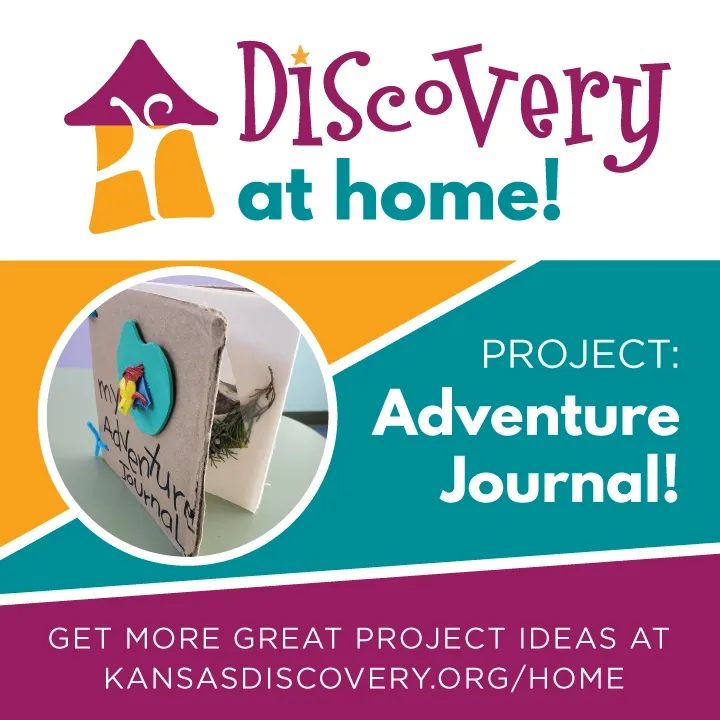Make your very own Nature Adventure Journal!
What do kids learn by making a journal? Journaling offers creativity and the ability to choose what to draw, which tools to use, and shares different perspectives. Nancy will be sharing lots of great nature exploration ideas in the coming weeks, so you’ll want to have your journal ready!

What you need:
- Recycled cardboard (cereal or cracker boxes work best)
- Paper (binder, brown paper sacks, typing paper, or newsprint)
- Ribbon, string, yarn, note card ring
- Colored pencils/crayons/markers
- Hole punch (if you don’t have one, a grownup can use a hammer and nails to punch a hole)
- Other art materials to use for decorating your book
Directions:
- Make front and back covers using cardboard material.
- Cut and fold paper the same size, or a little smaller, than your front and back covers to make the inside pages of your book.
- We recommend putting 10-20 blank pages in your book.
- Line up the covers and inside pages, then punch two or three holes on the edge of your book.
- Use ribbon or other materials to bring your book together and create the binding.
- Name and decorate your book!
Ways to Expand It
- A nature journal is a place to grow your thoughts, feelings, ideas, observations and experiences with nature. Whenever you head outside, take your nature notebook with you!
- Write, paint, draw. Nature always has secrets to share. Use magazines to create nature inspired collages of things you see while out exploring.
What Kids Learn
- Fine motor skills. Kids practice using the small muscles in their hands later used for writing.
- Hand eye coordination. Young children need activities like cutting or tearing paper, using glue sticks, or aligning pages.
- Journals teach real-life science through hands-on outdoor exploration.
- Keeping a journal supports wonder and independent thinking. Sketching an idea captures life that might otherwise pass by unnoticed and helps you relive moments of growth.
- Reinforce scientific language, discussion, shared ideas, descriptive language, general vocabulary, spelling, and pre-writing practice.
- Journaling offers creativity and the ability to choose what to draw, which tools to use, and shares different perspectives.
- Naturally grows art skills.
- Provides documentation of learning and the pretty paper trail of your amazing time together!
- Promotes real-life writing. Sketches become letters. Letters become words, words become sentences, thoughts, ideas, poems, prayers, stories and more.
- Encourages research based learning. When you stumble upon something you didn’t know about on a nature walk, it’s “natural” to want to discover more! What it is…what it does…where it lives…
- Develops graphing and mapping skills.
- Helps us to care for nature and to connect with the world around us.